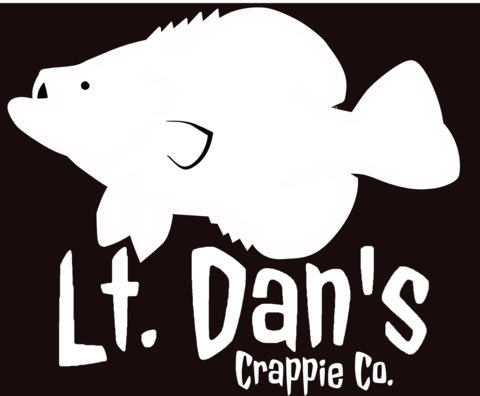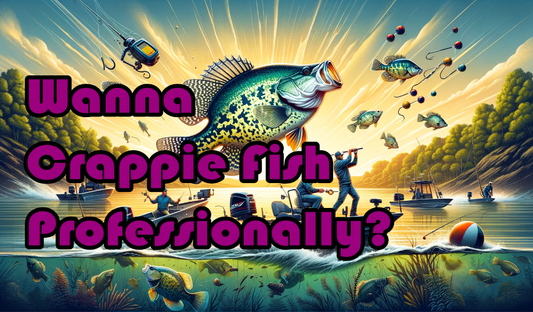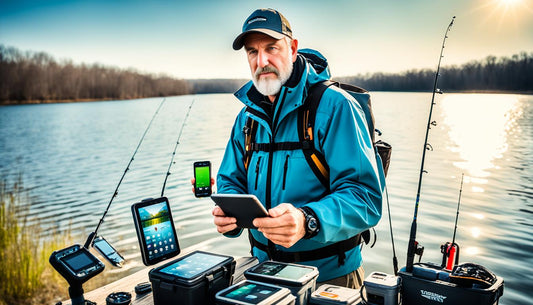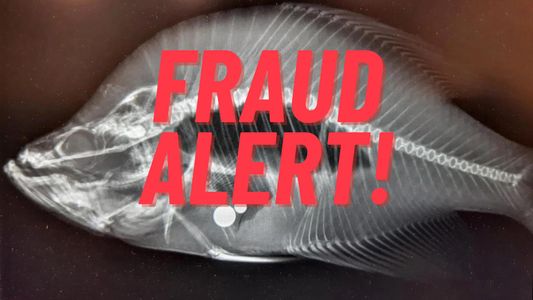Is there anything better than waking up early on a crisp spring morning and going crappie fishing? I’ve been going crappie fishing since I was a kid and now as an adult, I can say that it never gets old.
I now realize everything that I’ve learned over the years needs to be shared with everyone. From the best month for crappie fishing, down to the jig that you use, it could be the difference between catching the big one or coming home feeling really “crappie” (get it?).
Crappie Fishing Advice From a Pro
Ready to learn all the tips and tricks from professional crappie anglers? We’re going to talk about everything crappie, from what tackle you need, the different techniques to catch them, when to fish for them, and what makes crappie such a special fish.
Where to Fish for Crappie
When it comes to fishing for crappie you need to make sure you’re in a location that has them. You also need to know where to find them in the water. Here’s where to find crappie near you and where to locate them in the water.

Where are Crappie Located?
Crappie can be found all over the USA and if you are lucky enough to be in the Crappie Belt, that’s where you’ll find A LOT of them because this is where their native range is.
The crappie belt is a big square that starts in Virginia and goes down to Florida. Then from Florida crosses over to Texas and then up to Nebraska before ending back in Virginia.
They’re also found on the West Coast but just not as many as in the Southern, Northern, and Eastern US (aka the Atlantic Coast). If you are looking for the crappie jackpot, then head to Mississippi, Louisiana, Tennessee, and of course the great state of Texas!
Where to Fish for Crappie in Their Natural Habitat
Once you are in the correct geographical location it’s time to start fishing. When searching for crappie in your area, look for lakes, reservoirs, sloughs, rivers, ponds, streams, and backwater pools.
The best place to find them is anywhere where there is calm, shallow water surrounded by vegetation or rocks where they like to hide. Stick to the sides of the water near brush, downed trees, timber, and weeds. This is where you’re going to find them.
Near the Shoreline or Shallows
The best place for crappie fishing the near the shoreline (during the high season in the spring or fall). This means that you will want to be fishing from the water's edge on the land, pier, or any other man-made structures. If you are on a boat then try fishing from about 10 feet offshore. This is almost a surefire way to target crappie during the springtime.
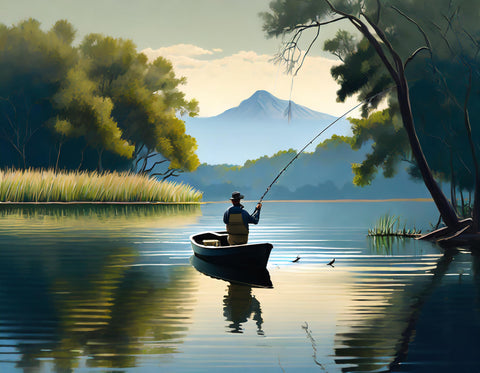
Fishing for Crappie on a Lake
To fish for crappie on a lake during the high season you'll want to stick to the water's edge. You'll find them near vegetation, rocks, tree stumps, or any other place where they can easily hide from predators.
Another place where you can find them is near any lake humps or water columns. A lake hump is any kind of island or shallower part of a lake that is generally more in the middle section where they can still find shallow places to spawn and nest.
Fishing for Crappie in a River
Fishing for crappie in a river is a little more difficult than fishing for them in a lake. To find crappie in a river, find a place that has the least amount of current.
This can be a back bay or shallow cove that protects them from the strength of a river's current. Once you've found your spot, look for downed trees or brush and you are ready to start fishing!
Fishing for Crappie in Other Bodies of Water
For all other bodies of water such as reservoirs, sloughs, streams, and backwater pools, you can follow the instructions already listed above. Find an area that has the least amount of water flow near the water's edge and then look for vegetation or rocks where crappie can hide. This is where you will want to start using the gear you bought to catch yourself a crappie.
Tackle and Other Gear You Will You Need to Catch Crappie
Now that you know where and how to find crappie, let’s get into what you’re going to need to “tackle” a crappie for yourself.
Fishing Rod
Choosing the right rod is critical to catching crappie. In my opinion, you are going to want to use a light or ultralight spinning rod. Rods like these two are designed for smaller fish, like the crappie, and will bend a lot more than other rods when you hook one. Rod sizes for crappie fishing can be from six to nine feet.
The best rod brands for you to check out are Ozark and ACC, which are some of the most trusted brands in the fishing game so you will not be disappointed. You can also use a cane pole which is easy to use and lightweight just like a spinning pole.

Fishing Reel
We just talked about spinning rods, now it’s time to pick a spinning reel. Some of the best reel brands for crappie fishing are Daiwa, Lew’s, and Shimano.
A reel with about a 6:1 gear ratio should get the job done when it comes to pulling in these little guys. For reel bearings, anything more than three is great. Lastly, you will want a reel that’s in the 500-1000 size range for great crappie reels.
Fishing Line
The fishing line is the last component that you will need for a perfect setup. For crappie fishing, a clear, monofilament or fluorocarbon 4-8 lbs line is all you’ll need. Like I said, these are small fish, you don’t need a super strong line to reel them in.
A 4 lbs line is the very minimum line strength that you are going to want to use. Anything less than this will not hold some of the bigger crappie that are out there. I use a 6 lbs line and have never had any issues.
Best Crappie Baits
Now let's get into the specifics of the crappie bait that you’ll need. You can either go with an artificial lure or live bait. If you choose artificial lures or artificial baits the jig you pick should be lightweight (a 1/16-ounce jighead is a perfect weight), and colors like chartreuse and blue-white will be perfect.
The brighter and shinier the color the better when it comes to baits. Brands like G-Daddy Baits and and Constant Pursuit are all great brands and won’t break the bank when you're shopping of small jigs.
When it comes to choosing the best hook, stick with a size eight to a size two. If you need to use a bigger bait like a minnow or worm then use a size ten to fourteen. You can use a normal hook or a jig with an attached hook.
Live Bait
For live bait, you’ll want to stick with minnows. Some of the crappies' main foods are the babies of the pike and catfish. This is the crappies' main source of food so putting one of these on your hook will draw them in quick! For hooking live bait, you can use a standard hook with a small split shot weight. Some of the other things that crappie eat are insects, worms, grubs, fathead minnows, crickets, zooplankton, and crustaceans. So using any of these as your small baitfish will work fine.
What is the Best Method to Catch Crappie?
The best methods (or rigs) for catching crappie are casting, vertical jigging, spider rigging, trolling, shooting docks, pushing jigs, and just a simple minnow on a bobber rig. These are all great ways to catch crappie but which way is best?
Casting
My favorite technique is casting. To do this, simply tie your 1/16-ounce jig to your line. If you are using live bait (a minnow) you can do this as well with a small split shot weight.
After doing this, cast your line close to the shore near some vegetation, stumps, or rocks. You’ll want to do a slow retrieve at an even pace (no jolting the line, let the jig do the work for you). You can use a kayak, or boat, or just stand on the shore to fish with this tactic.

Vertical Jigging
The next best technique is vertical jigging. This is the easiest way to fish for crappie but can be tough to master. Vertical jigging is when you drop your line at a set depth. The best jig to use will be a brightly colored stinger jig, tube jig, or live bait.
When vertical jigging for crappie, drop your line about a foot from the bottom in shallower water. Once you’ve done this, gently raise the line about one to three feet and then let it slowly fall back to its original spot. This will mimic a minnow swimming to the bottom of the lake the crappie will jump all over it!
Trolling and Spider-Rigging
These are both techniques that require multiple lines in the water at the same time (so multiple rods) and a boat. When you troll for crappie, you need two to six rods positioned off the side of the boat with the lines set at different lengths ranging from 100 feet to 10 feet. Once you’ve done this, you can move that boat at just one to two miles per hour with the trolling motor. This is called “trolling the boat”. You can use jigs, spinners, crankbait, and even live bait to get the best results when trolling for crappie.
For spider-rigging, place two to six rods at the front of the boat and start trolling (moving the boat very slowly). When you’re spider-rigging, the lines should be shorter and the rods longer than if you were using one of the other techniques. The best part about spider-rigging is that you can use different line depths and jigs to see which one has the best bite ratio.
Shooting Docks
To shoot the docks for crappie you first need to find the best dock to fish. These docks are usually on the side of a river or even a creek channel and are isolated. Once you find the perfect dock, use sonar to see if there are any fish under the dock. Start on the shallow side that's in the shade will be your ticket to getting crappie hooked.
Now you are ready to cast. To do this take your bait in your hand and use the elasticity of the rod to shoot your bait into the docks. This sudden movement will excite the fish and cause them to bite. Remember that a crappie bite can be hard to detect so watch for any movements in the line or rod.
Slip Bobber Rig
A slip bobber rig is great if you have to fish for crappie in deeper water. The difference between a bobber and a slip bobber is that a bobber is round and a slip bobber is more of an oval shape.
Slip bobbers allow you to fish at any depth and let you determine the depth you are fishing at. To do this you will want to string your line through the bobber and then place the split shot weight closer to the jig at the end of the line.
Then when you are ready to cast you can use a splitshot weight to make it so the line cannot go above where the slip bobber is. A slip bobber is said to be a more effective way to catch crappie than if you were to use just a normal bobber.
When to Fish for Crappie
The best part about crappie fishing is that you can do it year-round and at any time of the day! However, some seasons and hours are better for crappie fishing than others.

Best Time of Year for Crappie Fishing
Spring (March to May) is the best time to catch crappie because they come up into the warmer, shallow waters to spawn and nest. They are easy to spot in the shallow waters which makes catching them a breeze!
Fall (September to November) will be the next best season when they again will come to the shallow waters to spawn. However, the water temperature is lower in the fall so they are less abundant as the cold water tends to make them more docile.
The rest of the year (winter and summer) you can still catch crappie but they will be in deep cover of more than 15 feet so you will need a boat to fish for them.
Let’s get into more of the specifics of what makes these seasons good or bad and also how to fish during each season.
Spring Crappie Fishing
Spring is hands down the best time of year to go crappie fishing. As I said, it’s when they come up to the shallow waters to spawn. So the best depth to fish for them is going to be in the two to ten-foot range. When you have crappie spawning, the fish will be quick to catch in the shallows. To best understand the crappie spawning season, check out our article on crappie spawns here!
Find a place that’s close to shore surrounded by vegetation or rocks. You can even look for a shallow spot in the middle of a bay or lake. Once you’ve found the crappie hotspot, I find the best way to hook them is to use a bobber and jig and cast it close to them. This has been the way I’m able to catch the most crappie during the spring.
Fall Crappie Fishing
Fall is the second best time of year to fish for crappie. However, during the fall you will need to move to deeper waters (usually anywhere from 10-25 feet).
This means that using the trolling and spider-rigging techniques will get you the most bites. Keep an eye out for bars too because this is the perfect spot for fall crappie fishing.
Winter Crappie Fishing
Winter is the third best time for crappie fishing. Since the water will be cold (or frozen) crappie tend to move toward deeper waters. This means that the best winter technique will be vertical jigging.
The reason for this is that crappie are usually at a depth of around 20-40 feet in the winter. So, lowering your jig, then slowly raising it, and then letting it fall can help to draw out the crappie from the bottom of the lake.
Summer Crappie Fishing
Finally, we got summer which is in my opinion the worst month for crappie fishing. This is when the least amount of crappie are spawning so they spread out and aren’t in a group anymore. They also go deep during the summer (up to 20 feet) due to the heated water temps, so finding them can be hard.
To catch crappie in the summer, I’ve found that trolling deeper waters in the cooler sections of the body of water of your choosing is the best technique. Or sniping them with your trusty live scope and trolling motor!

Best Hours to Crappie Fish
The best time of day to catch crappie is in the morning right around sunrise. Usually, the hour and a half surrounding sunrise will be the best. The hours before sunset are also a good time but are not as good as sunrise.
In the middle of the day, they go to the deeper parts of the water and are less docile than in the morning and afternoon hours which makes them harder to catch.
For winter crappie fishing you will want to go during the hottest time of the day (noon to early afternoon). This is because during the winter they are very low energy and their bites are very weak so the hotter time of the day they will be a little more awake and ready to eat.
Summer crappie fishing you will want to go during the coolest times of the day. So before sunrise, after sunset, or even during the night! Summer night fishing is such a fun activity and if you haven’t tried it, you need to.
Best Weather Conditions for Crappie Fishing
When it comes to the best weather for crappie fishing you will want to go when it is cool outside (so around 70 degrees). This is when crappie are feeding most aggressively and are most likely to bite. Our crappie temperature and weather guide, can help shed light on the specific behavior of crappie during different weather situations.
Also, when it is overcast or cloudy this is a great time to go during the summertime. The reason for this is that the weather and water will be a little cooler and thus the crappie will be more active.
What You Need to Know About Crappie
Crappie (also known as papermouths, speckled bass, speckled perch, calico bass, sac-a-lait, and strawberry bass) are deep-bodied fish found in North America (USA, Canada, Mexico).
They are of the genus Pomoxis, and family of Centrarchidae. Some other fish that share this family are the largemouth bass and the bluegill sunfish.
The main two types of crappie are white and black crappie. The white and black crappie live differently and also have different ways to catch them.
White Crappie
White crappie are deep-bodied fish and have a light silver color on their bellies and either light or dark green on their backs. They prefer slightly rougher waters like streams, rivers, and reservoirs.
White crappie are not as good at hiding as black crappie and are out in the open more often. White crappie are also known to be bigger ranging from nine to fifteen inches. The biggest crappie ever caught was a white crappie so if you looking for the biggest of the two then you'll want to stick with fishing for white crappie.
Black Crappie
Black crappie are also deep-bodied fish and have more black spots and speckles (or specks) on their body than white crappie. They can be hard to tell apart by just looking at them but the black crappie are darker than the white crappie, especially on their belly.
In general, the water clarity that black crappie prefer is clear water with lots of vegetation to hide in. They are also the stubbier of the two and range in size from 4 to 10 inches.
A sure-fire way to tell them apart from one another is the white crappie have six spines of their dorsal fin and black crappie have seven to eight.
Crappie Behavior
Crappie will almost always be near a location that is close to cover like brush piles or some kind of vegetation. This is so when they are being attacked or feel threatened they have a place to hide.
The female crappie are usually in deep water while the male crappie are higher up near the water bank building nests for the eggs. To build the nest they will move their bottom fins across the mud, gravel, or sand to create a clearing where the female can then lay her eggs. Muddy water is a great way to spot where a potential crappie nesting area is.
Black and White crappie also have different behaviors as we discussed above. These are all things to keep in mind when fishing for crappie so you can catch the big one.
Crappie also group animals and move in schools when they are in deeper parts of the water. When they come up closer to the shore, they tend to space out a little more and are not in as tight of a group as they are around the 10-foot depth range. So if you are looking for schools of crappie, try putting your line at a depth of about 10 feet.

Where and When do Crappie Spawn?
When it comes to spawning, crappies do this in shallower water. You can see when crappie are spawning because there will be splashing on the surface of the water. They usually spawn in places with less vegetation because they make their nests in flat, muddy areas.
They begin spawning when the water temperatures reach 60 degrees and will continue to spawn until the water is about 70 degrees. When crappie are about to spawn the males will bite at almost anything that moves so this makes it the perfect time to fish.
Crappie spawn during the spring and fall most often. This makes these two seasons the best times to fish for crappie.
Check out our article on crappie spawns here!
More Facts About Crappie
A crappie's life span is about 7 years. When they are two to three years old they tend to be about a foot in length. Then from ages five to six, they increase in size to about 16 inches plus. This makes the older crappie a better fish to go for than the younger ones.
The world record for the biggest crappie ever caught is 5 lbs, 3 oz white crappie back in the year 1957! That means that this record has stood for more than 65 years. This is one of the longest-standing world records in the world of fishing. This record-sized fish was caught in Enid Lake in Mississippi so if you are looking for a big crappie then head to this lake.
The Crappies preferred water temperature is 68-72 degrees. This is what makes spring the perfect season for crappie fishing. The water will be right around this temperature and they are spawning which makes this the perfect crappie storm.
When the female crappie lays its eggs, in general, it lays about 5,000 to 90,000 eggs. After the female lays the eggs they are then guarded by the male crappie. It only takes 24 to 48 hours for crappie eggs to hatch and when they do, they are about 1 millimeter big.
Why am I Not Catching Any Crappie?
There are lots of reasons why you are not catching crappie but some of the main ones are the time of year, water temperature, and bait.
As I've said, the best time to catch crappie is during the spring. You can catch crappie at any time of the year but spring is when they will be the most active and ready to bite. During the other times of the year, the water is either really hot or really cold they tend to be more docile and less aggressive. This makes them less eager to bite.
The water temperature also plays a role in when they are most likely to bite. When the water is 60 degrees this is when they first start spawning. This means that the male crappie will get more aggressive because they are preparing to spawn with the females.
Lastly, we have the bait. If you have been out on the water all day and nothing is biting then it's time to switch up your bait. Crappie can get picky about what colors they like so if they are not biting on your chartreuse jig, try switching to a blue-white jig. You can also try switching to live bait if you are desperate.
What's the Best Way to Cook Fresh Caught Crappie?
Here is the reason why we do it. For that delicious fish dinner after a long day out on the lake. Some of the best ways to cook crappie are frying, grilling, and even steaming it. The most popular way to cook crappie is by frying it.
What Does Crappie Taste Like?
Crappie is a delicious fish that has a sweet taste and is known to be a milder fish that doesn't taste too fishy. This makes it a great fish that can go with almost any meal because whatever spices you add to it will only enhance the flavors. This fish is also known to be flakey so this makes it the perfect fish to fry up.
How to Fry Crappie
First, you will want to make the batter. In a dish, add a beaten egg with some water. This will help the dry ingredients stick to the crappie better. For the crappie crust, combine cornmeal, salt, and some ground black pepper. This will give it a great crunch when you fry it.
To fry it, simply add about 2 inches of oil to your frying pan. Once the oil reaches 350 degrees, dip the crappie into the wet ingredients, then coat in your dry ingredients, and then you can add the crappie to the oil. Cook for about 5 minutes on each side or until the crappie is golden brown. Pretty easy, right?
That's Everything You Need to Know About Crappie Fishing!
So that is everything there is to know about crappie fishing. By the end of reading this article, you are now a crappie fishing master! I hope that this helped you and that you now can fish for crappie with confidence. Now go fish!
